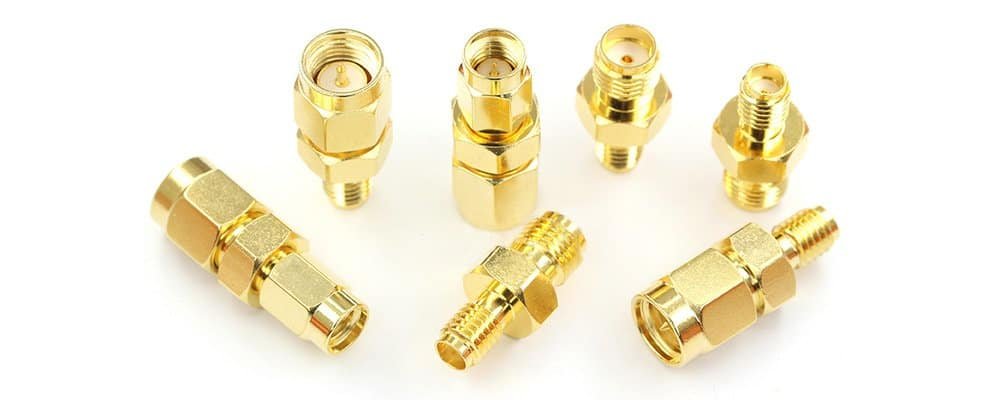What is the difference between SMA and SSMA connectors?

09
Jun
 Coaxial Cable Assembly
Coaxial Cable Assembly
 Microwave Test Cable
Microwave Test Cable
 Coaxial RF Connector
Coaxial RF Connector
 Coaxial RF Adapter
Coaxial RF Adapter
 Coaxial RF Termination
Coaxial RF Termination
 Coaxial RF Test Probe
Coaxial RF Test Probe
 Coaxial RF Attenuator
Coaxial RF Attenuator
 RF Switch
RF Switch Coaxial RF Power Dividers
Coaxial RF Power Dividers
In the fast-paced world of radio frequency (RF) technology, choosing the right connector is critical for performance. SMA and SSMA connectors are two widely used options, each with unique features. While they share some traits, the differences between them matter. This article explores these differences, focusing on SSMA connectors, to help B2B users make informed decisions for their RF needs.
SMA connectors, short for SubMiniature version A, are coaxial RF connectors introduced in the 1960s. They use a threaded coupling design for secure connections, ideal for frequencies up to 18 GHz. These connectors are popular in industries like telecommunications, microwave systems, and WiFi equipment. With a 50-ohm impedance, SMA connectors offer durability and reliable signal transmission for various applications.
SSMA connectors, a smaller variant of SMA, are built for higher frequencies and compact spaces. Operating from DC to 35 GHz—and up to 40 GHz in some cases—SSMA connectors shine in advanced RF setups. Their smaller size suits aerospace, defense, and high-frequency testing. Available as SSMA male connectors (with a center pin) and SSMA female connectors (with a receptacle), they maintain a 50-ohm impedance, ensuring top performance.
To solve the question of which connector fits your needs, let’s analyze their differences:
SSMA connectors are notably smaller than SMA connectors. The SSMA connector dimensions are optimized for high-frequency use in tight spaces, making them perfect for compact designs. SMA connectors, being larger, suit applications where size isn’t a constraint and robustness is key.
Frequency capability sets these connectors apart. SMA connectors handle up to 18 GHz, while SSMA RF connectors reach 35 GHz or more. This makes SSMA ideal for cutting-edge, high-frequency projects requiring superior signal integrity.
SMA connectors thrive in general RF uses like WiFi antennas and hand-held radios. SSMA connectors, however, are tailored for specialized fields—think aerospace systems or precision test equipment—where space and frequency demands are higher.
Both connectors feature threaded coupling, but the smaller SSMA requires careful handling for proper alignment. SMA’s larger size makes it easier to install in less delicate setups.
Choosing between SMA and SSMA connectors depends on your project:
Evaluate your frequency needs, space constraints, and environment. For tailored advice, reach out to an RF supplier to ensure peak performance and avoid costly mismatches.
SMA and SSMA connectors each bring value to RF applications, but their differences are clear. SMA offers robustness for frequencies up to 18 GHz, while SSMA connectors excel in high-frequency, space-tight scenarios. Understanding these distinctions helps B2B users select the right SSMA RF connector or SMA option, driving efficiency and sparking potential inquiries for your next project.
 Coaxial Cable Assembly
Coaxial Cable Assembly
 Microwave Test Cable
Microwave Test Cable
 Coaxial RF Connector
Coaxial RF Connector
 Coaxial RF Adapter
Coaxial RF Adapter
 Coaxial RF Termination
Coaxial RF Termination
 Coaxial RF Test Probe
Coaxial RF Test Probe
 Coaxial RF Attenuator
Coaxial RF Attenuator
 RF Switch
RF Switch Coaxial RF Power Dividers
Coaxial RF Power Dividers Coaxial Cable Assembly
Coaxial Cable Assembly
 Microwave Test Cable
Microwave Test Cable
 Coaxial RF Connector
Coaxial RF Connector
 Coaxial RF Adapter
Coaxial RF Adapter
 Coaxial RF Termination
Coaxial RF Termination
 Coaxial RF Test Probe
Coaxial RF Test Probe
 Coaxial RF Attenuator
Coaxial RF Attenuator
 RF Switch
RF Switch Coaxial RF Power Dividers
Coaxial RF Power DividersNo account yet?
Create an Account